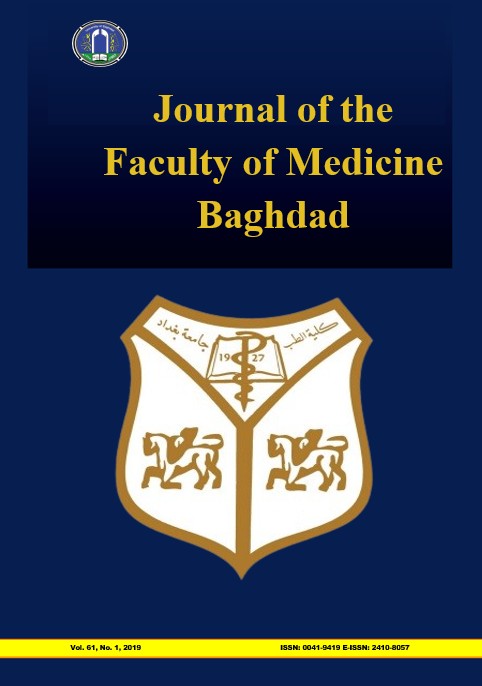Role of Two- Dimensional Speckle Tracking Strain versus Conventional Echocardiography in the Assessments of Left Ventricular Systolic Function in Middle-aged Hypertensive Patients.
DOI:
https://doi.org/10.32007/jfacmedbagdad.611893Keywords:
Systemic hypertension; Tissue Doppler Imaging; Speckle tracking echocardiographAbstract
Background: Global longitudinal strain (GLS) echocardiography is a new technique that can be used to detect an early left ventricular dysfunction in various heart diseases . Systemic hypertension is a major risk factor for cardiovascular accidents. The early management of its complication on the heart plays an important role in the outcome of the disease. Hypertension is associated with changes in several aspects of left ventricular structure, function, and systolic strains. Various echocardiographic techniques are used to evaluate left ventricular function in hypertensive patients. Objectives: To evaluate the effectiveness of speckle tracking global left ventricular strain percentage (GLVS%) in the assessments of left ventricular systolic function in comparison to conventional echocardiography in middle -aged hypertensive patients. Patients and Methods: The study was conducted from December 2017 till November 2018 at the Department of Echocardiography and Catheterization / Baghdad Teaching Hospital – Medical C ity,Baghdad, Iraq. One hundred and four hypertensive patients classified as ; group I that involved patients with reversed E/A ratio on PW Doppler with reversed Pulsed Wave ( PW) tissue Doppler study and group II with patients having normal E/A ratio on PW Doppler and reversed Eprime/A prime on PW tissue Doppler study . The control (group III) recruited from the relative of the patients included 104 sex and age -matched healthy individuals . A detailed history with the recommended investigations and blood pressure measurements was performed for all participants. Additionally, echocardiography examination was implemented using standard methods, considering eftventricle (LV) internal dimension, LVejection fraction percentage (LV EF%) , LV diastolic function using PW Doppler and lateral mitralannular tissue Doppler Sprime,Mitral annular plane systolic excursion (MAPSE) and global LVspeckle tracking strain percentage (GLVS%). Results: Group I included 76 patients with a mean age of (48 ± 6.6 years) and group II included 28 patients with a mean age of (48 ± 6.6 years). A ll the participants had normal EF% (> 60%), MAPSE (>13 mm), and S prime (> 9 cm /sec) while there were a significantly decreased GLVS% in the diseased groups in comparison to the control one (P < 0.005) being less in group II (-14 ± 1 %) than in Group I (- 16 ± 1 %) . In addition to a significant negative linear correlation between GL V S% with that of pulse pressure and IVST respectively ( p=0.04) and with that of E/A ratio and E/E prime ratio (p=0.001). Conclusions: GLVS% is a better method in the assessment of LV systolic function in inmiddle- aged hypertensive patients than conventional echo methods since it could detect an early impairment in LV systolic function despite preserved LV systolic function measured by the conventional echo methodsDownloads
Downloads
Published
Issue
Section
License
Copyright (c) 2019 Mahasen Aldoori

This work is licensed under a Creative Commons Attribution-NonCommercial 4.0 International License.











 Creative Commons Attribution 4.0 International license..
Creative Commons Attribution 4.0 International license..


